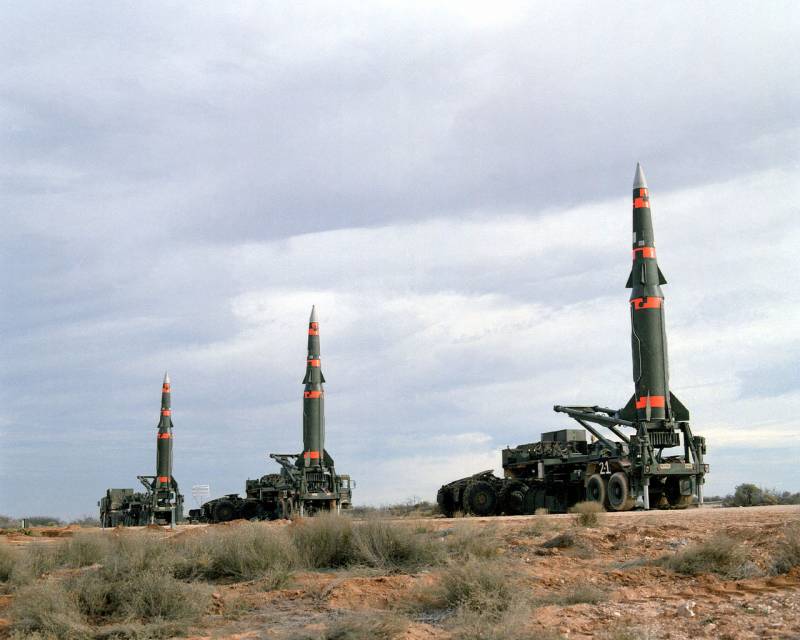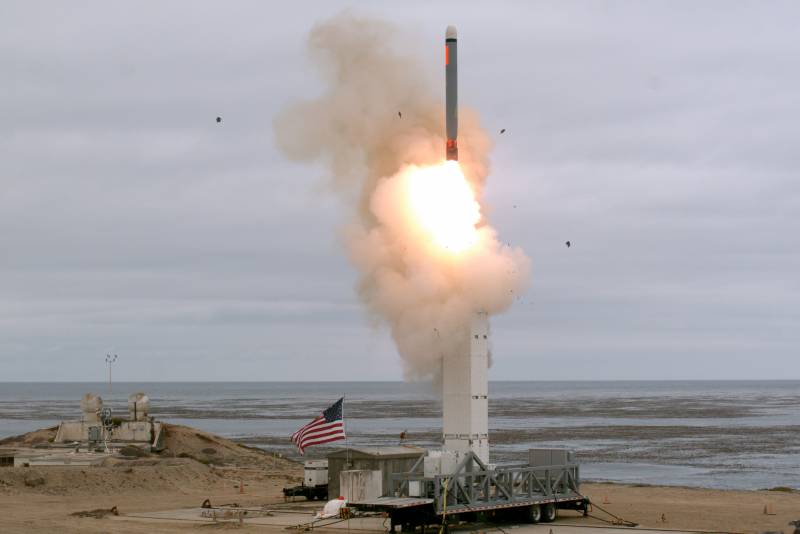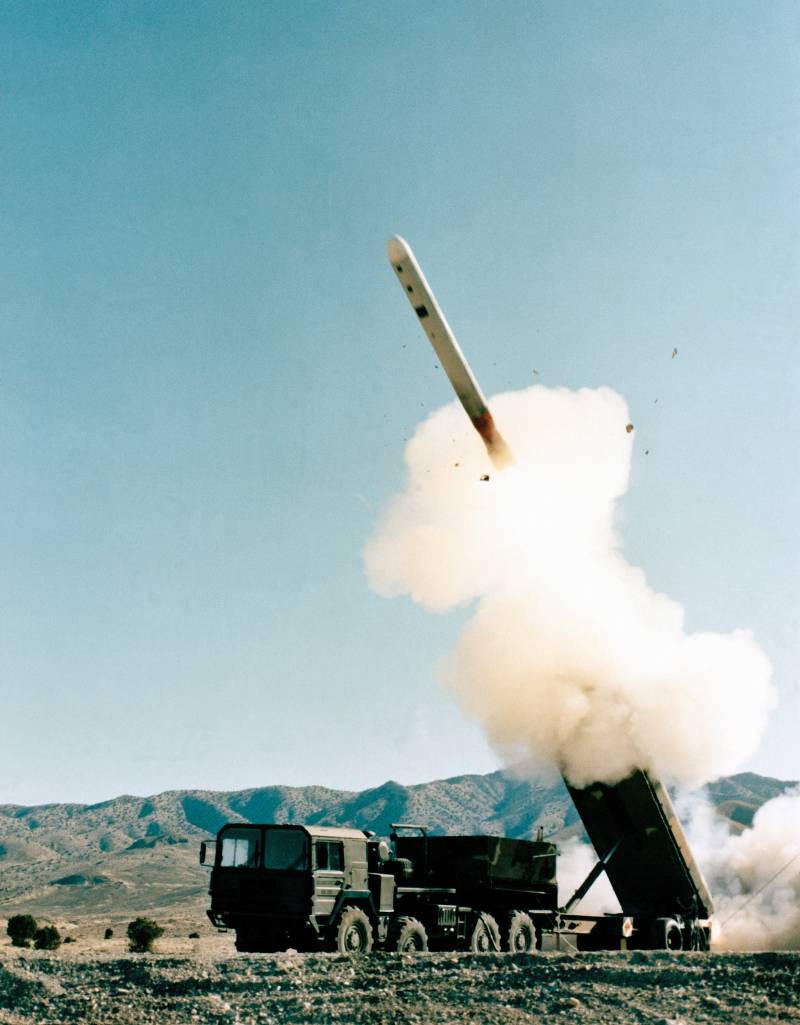New US rocket and security threats
In February this year, the United States and Russia sequentially suspended their participation in the Treaty on the Elimination of Intermediate-Range and Shorter-Range Missiles (INF Treaty). Over the next few months, the parties were unable to find a common language and return to compliance with the agreement. 2 August Treaty formally terminated. As a result of this, the two countries can now develop and put into service new types of missiles previously prohibited by the INF Treaty. The new US medium-range missile may be tested in the very near future.
Menacing plans
In February, official Washington suspended its participation in the INF Treaty and launched a procedure for withdrawing from the agreement. This was followed by a series of important and threatening statements of various kinds. The US leadership continued to accuse Russia of violations, and the Pentagon announced its plans for the coming months.
In March, the military department announced its intention to conduct tests of two ground-based missile systems this year. It was a question of cruise and ballistic missiles of unnamed types. Testing of the products was scheduled for the second half of the year - they were supposed to take place after the final US exit from the INF Treaty. Both events were planned to be held no later than November.
Half of these plans were completed in August. Just a few days after the termination of the INF Treaty, a cruise missile was launched in the United States. A medium-range ballistic missile (BMBM) of a new type has not yet been tested.
In early September, it became known about some change in plans. Earlier, a test launch of the new ADB was planned for November. Now the possible dates have been expanded, and the tests will take place before the end of the calendar year. Half of November has already passed, and this means that only six weeks are left for the launch of the BRDS. Unless, of course, the Pentagon is not going to change the schedule again.
Prototypes
Already on August 18, the Pentagon conducted the first of two promised test launches of the “new” rocket, which did not comply with the provisions of a pre-existing treaty. An experimental ground-based missile system with a cruise missile made the impression of a hastily done and exclusively from available components. His trials generally showed nothing new.
The missile system was carried out on the basis of a wheeled semi-trailer with a platform. A vertical launch module for the Tomahawk rocket was installed on it. The result was a ground-based cruise missile system with a range of over 500 km. Testing and production of such complexes were prohibited by the INF Treaty.
During the first and so far only launch from a land platform, the Tomahawk rocket hit the intended target. The ability to install such weapons to the ground platform has been confirmed by practice. Rather, it was a question of returning to old practices, since in the past there was already a modification of Tomahawk with placement on a land launcher.
According to the plans of the Pentagon, in the second tests this year they use a ballistic missile. The type of this product is still unknown. At the same time, the possible characteristics of the new MDB, as well as the possible areas of its deployment are reported.
It is planned to launch a medium-range ballistic missile capable of delivering loads over distances of 3-4 thousand km for testing. Weapons should be placed on a ground platform, the type of which is not specified. It will take several years to finalize the product, after which it will be able to enter service. The search for possible deployment areas is being carried out taking into account the characteristic threats and challenges of our time.
Dangerous news
Obviously, new types of weapons, the development of which was previously banned, are created not only to demonstrate the capabilities of industry. New US missile systems can be deployed in certain regions in order to solve specific military and political problems. It is the problem of deploying promising weapons that most concerns third countries, primarily Russia and China.
The ground-based version of the Tomahawk rocket, tested in August, completed the task and showed its capabilities. However, the characteristic appearance of such a complex suggests that he was exclusively a technology demonstrator. With its help, they confirmed the possibility of transferring the existing cruise missile to the ground platform, and this experience can be used in future projects.
Apparently, the semi-trailer with the installation under Tomahawk will remain a prototype, not intended for adoption. Accordingly, such a complex does not pose a threat to third countries. However, a problem of this kind will be new full-fledged systems developed on the basis of the experience gained.
To a greater danger for the geopolitical competitors of the United States can be a promising BRDS, the tests of which will begin in the near future. In the foreseeable future, it is planned to bring it to the series and adoption. Then serial products are deployed at various bases.

Complexes Pershing II - the latest at the moment, the BRDS, which were in service with the United States
Over the past few months, Pentagon officials have repeatedly raised the topic of the possible deployment of new infantry fighting vehicles in the absence of restrictions on the INF Treaty. It is assumed that such weapons will reach combat duty no earlier than five years later. One of the places of its deployment will be about. Guam, from where the BRDS will be able to control a significant part of China. In this case, an American missile will be a direct response to Chinese systems capable of attacking US targets in Guam.
The deployment of missiles in the territory of the allied countries in Asia or Europe will give the Pentagon certain advantages, but so far it seems unlikely. To do this, it is necessary to solve a number of issues of a political nature, as well as to convince the Allies of the security of such cooperation. If this can be done, the new BRSD will be able to threaten not only China, but also Russia.
Hidden threat
This year, the United States plans to test two missile systems previously banned by the INF Treaty. Both of the proposed models have their pros and cons, but only one of them at the moment looks like a serious threat. This is a medium-range ballistic missile, while preparing for testing.
SLBMs have a number of characteristic advantages over other shock systems. They differ in short flight time and are capable of carrying a different combat load, as well as means of overcoming missile defense. Such a weapon is convenient for carrying out the first strike on the enemy, which is quite difficult to repel.
However, the promising American BRDS is still hidden from the general public. Only the fact of its development and approximate characteristics are known. All this allows us to make forecasts, but their accuracy may still be insufficient. The situation should change in the coming weeks. Until the end of December, the Pentagon is going to conduct the first tests of such a missile, and they obviously will not be classified. Based on the new data, it will be possible to clarify the available estimates and forecasts, as well as expand them with an eye to the future.
Among other things, it will be possible to determine exactly how dangerous the new samples are, as well as how to deal with them. A promising infantry-fighting ballistic missile system will be able to enter service by the mid-twenties, and third countries still have time for the necessary reaction.
What to do?
Russia and China have not yet announced their plans in the context of a response to a new threat from the United States. However, it is clear what measures are required for this. It is necessary to develop anti-ballistic and anti-aircraft defense, which will make cruise and ballistic missiles of existing and promising types ineffective or useless. In addition, you may need a symmetric response in the form of your own missile systems of one kind or another.
Even at the stage of the exchange of accusations, it became clear that breaking the Treaty on the Elimination of Intermediate-Range and Shorter-Range Missiles would have the most serious consequences. Now such forecasts are confirmed. The United States has already begun work on the creation of new weapons, previously excluded by the Treaty. In the foreseeable future, such systems are capable of changing the situation in the international arena, and it is not known where this will lead. However, it is clear that any of the new models may become the most serious threat to the security of several countries, including and Russia.
- Ryabov Kirill
- US DoD, US Air Force


Information